On Gold Mountain: The One-Hundred-Year Odyssey of My Chinese-American Family Read online
On Gold Mountain
Lisa See
Copyright
On Gold Mountain
Copyright © 1995 by Lisa See
Cover art to the electronic edition copyright © 2009 by RosettaBooks, LLC
All rights reserved under International and Pan-American Copyright Conventions. Published in the United States by Vintage Books, a division of Random House, Inc., New York and simultaneously in Canada by Random House of Canada Limited, Toronto. Originally published in hardcover by St, Martin’s Press, New York, in 1995.
First electronic edition published 2009 by RosettaBooks LLC, New York.
ISBN Kindle edition: 9780795304927
ISBN Mobipocket edition: 9780795304934
For the great-great-grandsons of
Letticie and Fong See,
Alexander See Kendall
and
Christopher Copeland Kendall
Fooling around in the papers my grandparents, especially my grandmother, left behind, I get glimpses of lives close to mine, related to mine in ways I recognize but don’t completely comprehend. I’d like to live in their clothes a while….
Wallace Stegner, Angle of Repose
Contents
Foreword
Part I
1. The Wonder Time, 1866–71
2. Exclusion, 1872–93
3. Love, 1894–97
Part II
4. Lo Sang, 1897–1902
5. Immigration, 1902–13
6. Family Days, 1914–18
7. The Home Village, 1919–20
Part III
8. Playboys, 1920–24
9. The Kidnapping, 1925–28
10. Depression, 1929–34
11. Memories: Tyrus Tells His Story
12. Dragon’s Den, 1934–35
Part IV
13. Snapshots, 1936–38
14. Anna May Speaks (from the Grave)
15. Second Chances, 1939–41
16. The Mission Family Gets a Daughter-in-Law, 1942–45
Part V
17. Hollow Bamboo, 1946–47
18. Fire, 1947–50
19. Another Marriage, 1951–57
Part VI
20. Family Means Everything, 1957–95
21. The Home Village II, Spring 1991
Acknowledgments
Sources
FOREWORD
FONG See, my great-grandfather, left China in 1871 as a youngster, found prosperity on the Gold Mountain (the Chinese name for the United States), and lived to reach his hundredth birthday. Rising out of a mass of nameless Asian immigrants, he became one of the richest and most prominent Chinese in the country. He lured customers into his Asian art store by selling tickets to see a stuffed mermaid. He loved money, and had a childlike enthusiasm for fancy cars. He also had a way with women. My family always “knew” that Fong See had two wives. The marriage between Fong See and Letticie Pruett—my Caucasian great-grandmother—would go on to establish the See name. The second wife, a Chinese waif who had supported herself making firecrackers, was only sixteen when she married my great-grandfather, who was sixty-four at the time. This family always lived under the name of Fong. Altogether, Fong See sired twelve children—five Eurasian, seven Chinese—the last born when he was in his late eighties. This is the story of the Sees and the Fongs and how they assimilated into America.
As a girl, I spent frequent weekends and most of my summer vacations with my paternal grandparents in Chinatown. We would pass through a moon gate guarded by two huge stone lions and enter the dark, cool recesses of our family’s Chinese antique store, the F. Suie One Company, a gigantic mercantile museum that contained, among other things, porcelains taken from the royal kiln and floated downriver on sampans; altars pillaged from provincial temples; and huge architectural carvings shipped in sections to be reconstructed by Fong See’s sons in one of his many warehouses.
At lunchtime, Grandma Stella and I would walk up the street to a restaurant that must have had a real name but that we just called “the little place.” Along the way we’d stop to chat with Blackie at the Sam Sing Butcher Shop, with its gold-leafed roast pig in the window. We’d stop in at Margaret’s International Grocery and browse through the aisles with their salted plums, dried squid, and fermented tofu. At the restaurant, we’d go back to the kitchen to chat with the cook and watch as he packed up our order into cartons.
Once back at the store, I’d go upstairs to the workroom, with its huge machinery and its pinups of sedate Chinese maidens, where my grandfather and great-uncle Bennie would be engulfed by dense clouds of sawdust and the din of saws. Bennie would invariably look at me wild-eyed and shout, “I’m gonna put you in trash can.” Terrified, I’d scramble back downstairs and my grandfather and uncle would wash up with Lava soap.
After lunch, if I got bored—perhaps after playing in the mountains of straw packing, or climbing into the arms of a gigantic Buddha, or making a fort underneath one of the large altars—Grandma Stella would let me “help” her while she worked on the restoration of a coromandel screen. I might clean brushes or mix ink; sometimes she let me use my fingertips to press clay into the chipped areas. Or I might help my great-aunt Sissee as she dusted and polished her way from the bronze room to the art room to the room for scrolls and fabrics, and from one end of the main hall—which held exquisitely carved furniture—to the other.
In the late afternoons, my grandmother and great-aunt Sissee would relax in wicker chairs in the back of the store over cups of strong tea. During that quiet and comfortable time they would reminisce about the past. They told intriguing and often silly stories about missionaries, prostitutes, tong wars, the all-girl drum corps, and the all-Chinese baseball team. They spoke about how the family had triumphed over racist laws and discrimination. Then, as inevitably as Uncle Bennie’s threat of the trash can, would come my grandmother’s assertion that, “Yes, during the war, the lo fan (white people) made all of us Chinese wear buttons so that they would know we weren’t Japanese.”
My grandmother taught me how to wash the rice until the water ran clear, then—without the aid of a measuring cup—pour water over the grains in the steamer up to the first knuckle of a hand. It didn’t matter if it was her knuckle or mine, she explained; for five thousand years the system had worked perfectly. Finally she would place a few lengths of lop cheung, a delicious pork sausage, on top to cook as the rice steamed. Meanwhile, my grandfather would be chopping ingredients. Once the rice was on, I became my grandfather’s second cook. “The best I ever had,” he used to say. Together—although all these years later I can’t remember a single thing I did—we would make up a dish of tomato beef for which he was remembered decades after his death.
At family weddings, we’d wait at our table for the bride to come by, and my grandmother would let me be the one in our group to hand over the lai see—“good-luck money” wrapped in a red envelope with gold characters of felicity and fortune limned on the outside. My grandmother would take me from table to table through huge banquet rooms, explaining who each and every person was and how they were related to me. “This is your first cousin once removed. This is your third cousin.”
In 1989, Aunt Sissee celebrated her eightieth birthday with a traditional Chinese banquet. I will always remember how my cousins and I left our banquet room to spy on the wedding taking place in the main dining room, where at least five hundred guests kept tapping their chopsticks on their bowls or glasses, making an amazing racket. “Well, they must be from Taiwan,” one of the cousins sneered. “You know,
FOBs, fresh off the boat.” Since Fong See’s first voyage and his early dubious career selling crotchless underwear to brothels, the family had become the old line, the aristocracy. No longer FOBs, we were ABCs—American-born Chinese.
That evening I gave Sissee a copy of Ruthanne Lum McCunn’s book, Chinese American Portraits, which, for all its tragedies, secrets, and illicit exploits, also conveys a powerful cultural and artistic ethos. Three days later my cousin Leslee called. She wanted me to know that Sissee, her mother as well as my great-aunt and the only living child of my great-grandfather’s half-Chinese, half-Caucasian family, thought it was time for a book to be written about our family and that I was the person to write it. The following week I was over at the store with my tape recorder, listening to the stories Aunt Sissee, my grandmother, and my cousin had to tell. That first day I learned that Fong See was not the first family member to come to the Gold Mountain. His father—my great-great-grandfather—had worked as an herbalist during the building of the transcontinental railroad. I also found out that Fong See had not two but four wives. All through the years my relatives had kept these marriages a secret; bigamy was against the law and embarrassing to his children.
Two months later Sissee died suddenly, but Leslee encouraged me to continue with the book. Our friends and family were getting up into their eighties and nineties, she noted, and when they died their stories would be lost. At Leslee’s urging, I pressed on. My relatives, including my father, who truly were not disposed to participate, did so—I believe—to honor my great-aunt’s wishes.
During the last five years I have interviewed close to one hundred people, rich and poor, Chinese and Caucasian. I struggled with the difficulties posed by different names for the same person: Milton, Ming, Ming-ah, Ah-Ming for my great-uncle; Fong See, Suie On, and Seebok for my great-grandfather. I tried to decipher the heavily accented English of old men who confuse the words for he and she, him and her, in this time and in this town. I spoke with some who could no longer remember their own mothers’ names. “It was a long time ago,” one man told me.
Poring over documents in the National Archives, I discovered that immigration authorities had been after my relatives from the very beginning, but never really caught on to what they were doing. I received help from numerous libraries, historical societies, and academicians. I nagged relatives, friends, and customers to rummage through their attics, basements, and closets for photographs, papers, and other memorabilia from fairs, art shows, and family rites. I looked at films and videotapes, scrapbooks and letters, packing slips and tax records. In total ignorance, I struggled with the difficulties of the Chinese written language: Should I use Mandarin or Cantonese? And how should I romanize it: with the Wade-Giles or Pinyin system? (Ultimately I decided to use Cantonese with the old-fashioned Wade-Giles method, in keeping with the era of the book. However, medicinal words are more properly rendered in Mandarin/Pinyin.)
What has emerged is a story of melting—how people and cultures melt in all directions. What I haven’t yet mentioned is that when my grandmother included herself among the Chinese who had to wear buttons during the war, she might be tucking loose strands of red hair into her bun. My grandmother—like my great-grandmother—was Caucasian, but she was Chinese in her heart. She had melted into that side. Over the years, she had packed away her eyelet dresses with their cinched waists, and had adopted black trousers and loose-fitting jackets, which she always wore with a beautiful piece of Chinese jewelry. She learned how to make lettuce soup, how to give those brides their lai see, how to be a proper Chinese daughter-in-law. My great-grandmother, grandmother, and mother were as Caucasian and “American” as they could be, yet they all chose to marry men whose culture was completely different from their own.
Many of the Chinese I interviewed talked about Caucasians as lo fan and fan gway, as white people, “white ghosts.” Often someone would say, by way of explanation, “You know, she was a Caucasian like you.” They never knew how startling it was for me to hear that, because all those years in the store and going to those wedding banquets, I thought I was Chinese. It stood to reason, as all those people were my relatives. I had never really paid much attention to the fact that I had red hair like my grandmother and that the rest of them had straight black hair. But I had other proof as well. All Chinese babies are born with a Mongolian spot—a temporary birthmark in the shape of a cabbage—at the small of their backs. I had a trace of that spot when I was born. Though I don’t physically look Chinese, like my grandmother, I am Chinese in my heart.
Finally, it is hard to read any book on Chinese immigration or the Chinese experience that isn’t critical of other books on the same material. All of them have their own views on racism, poverty, the role of women, language, politics, art, love, and beauty. I don’t know who’s right or wrong, or who’s more historically accurate as opposed to more politically correct. All I can hope to do is tell our story. On Gold Mountain doesn’t purport to be the whole truth—just a truth, one that has been filtered through my heart, my experience, and my research.
PART I
CHAPTER 1
THE WONDER TIME
1866–71
FONG Dun Shung hoisted his Gold Mountain bag onto his shoulder and nodded one last time to his wife, daughter, and Number One and Number Four sons. He turned, and began the half-day’s walk to Fatsan, where he would board a sampan and float east through the Pearl River delta to the big city of Canton, then south to Hong Kong, where he would board a ship for Gam Saan, the Gold Mountain. Fong Dun Shung and his second and third sons padded single file along the raised pathways that divided the pale green ricefields that lay just outside the protective wall of Dimtao. How long, he wondered, would it be before they returned home?
Fong Dun Shung had heard of other men who had made their fortunes as Gold Mountain men. Defying the powerful ties of family tradition and the more tangible threats by the Dowager Empress of death by decapitation for leaving China, many men had gone looking for gold. It was said of Gam Saan that a man could find pieces of gold as large as a firstborn son lying openly on the ground for anyone to pick up and keep. Now people talked about this railroad and jobs to be had for any man who was willing to work hard. In his village, the men guessed that even if you couldn’t save one thousand American dollars, you would make at least eight hundred. Fong Dun Shung shifted the weight of his basket from his right shoulder to his left. He was lucky. He was being given a free trip to the Gold Mountain, and he and his sons had already been promised jobs.
These had been harsh years for his family. Dimtao was a poor village, and this branch of the Fong family was one of the poorest. Fong Dun Shung didn’t own land, not even one miserable mou in a time when the whole world knew that at least three mou were required to sustain a single life. He couldn’t rent land, for he was too poor even to buy rice seed.
He was an herbalist, trained in an art many thousands of years old. From his father he had learned that the most important thing in the universe was qi—the essential life force—and that the balancing of qi was imperative to maintaining good health. He had learned to envision the human body as a universe containing the five elements—wood, fire, earth, metal, and water—and that each of these elements governed a corresponding organ—liver, heart, spleen, lungs, or kidneys. If any of the six essences—wind, cold, summer heat, dampness, dryness, or fire—became overbalanced, then a body would weaken and fall prey to disease and illness. He had learned all this from his father, and in these past years Fong Dun Shung had been teaching his sons.
Fong Dun Shung was a traveling man who, with his older sons, wandered from village to village throughout the countryside. On good days, villagers clustered around as his sons beat gongs to announce their arrival. Then they laid out mats and blankets on the rough dirt outside a family association house inside of which the births and deaths of all of a village’s ancestors were carved into stone and mounted on cool walls. Perhaps it was this close proximity to the thoughts of ancest
ors, or perhaps it was the kung fu that Fong and his sons performed to attract children and old people. He couldn’t say now. But for many years—as he tossed a son through the air, or moved himself through the exercises based on the movements of the deer, bear, tiger, monkey, and crane, which would be restorative for rheumatism, arthritis, digestive disorders, and chronic fatigue—there had always been customers.
At the end of the exhibition, Fong displayed his herbs. Women clustered around. “What may I take to help make strong the son who grows in my belly?” a woman heavy with child might ask. He would give her a packet of ground peach pit, tiger thistle, and the leaf of the pagoda tree to facilitate blood circulation. “Healthy parents have healthy children,” he liked to say. “If you keep your blood strong, then your children will go through life disease-free and have healthy children of their own.” For women who would not stop bleeding after childbirth, he prescribed brews made from Japanese catnip, turmeric, and safflower.

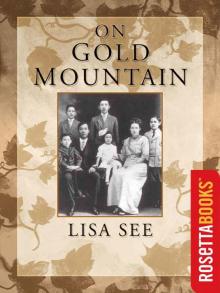 On Gold Mountain: The One-Hundred-Year Odyssey of My Chinese-American Family
On Gold Mountain: The One-Hundred-Year Odyssey of My Chinese-American Family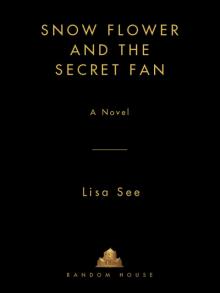 Snow Flower and the Secret Fan
Snow Flower and the Secret Fan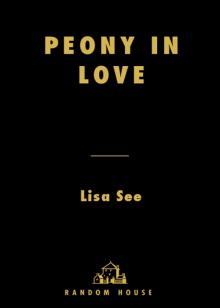 Peony in Love
Peony in Love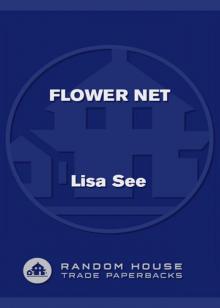 Flower Net
Flower Net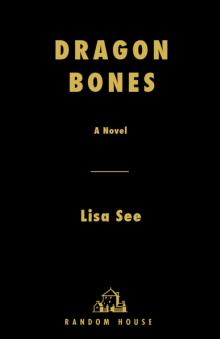 Dragon Bones
Dragon Bones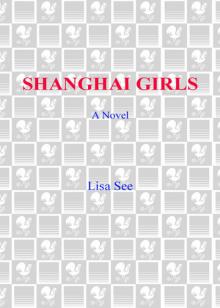 Shanghai Girls
Shanghai Girls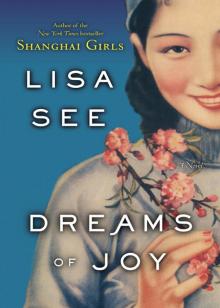 Dreams of Joy
Dreams of Joy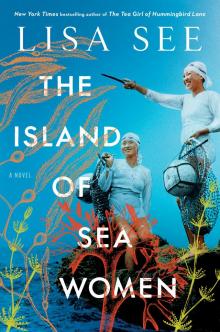 The Island of Sea Women
The Island of Sea Women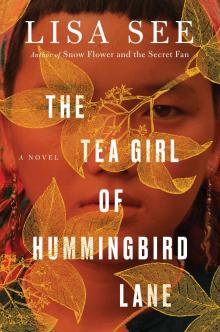 The Tea Girl of Hummingbird Lane
The Tea Girl of Hummingbird Lane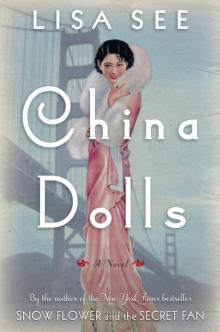 China Dolls
China Dolls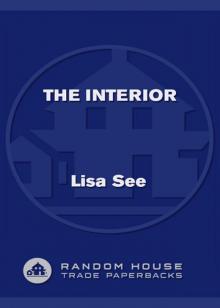 The Interior
The Interior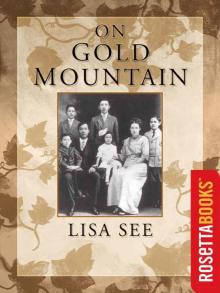 On Gold Mountain
On Gold Mountain